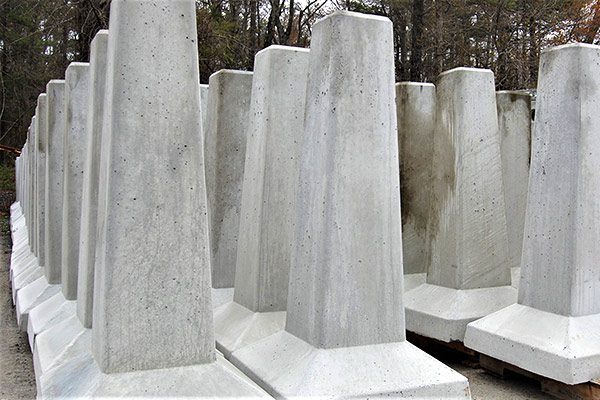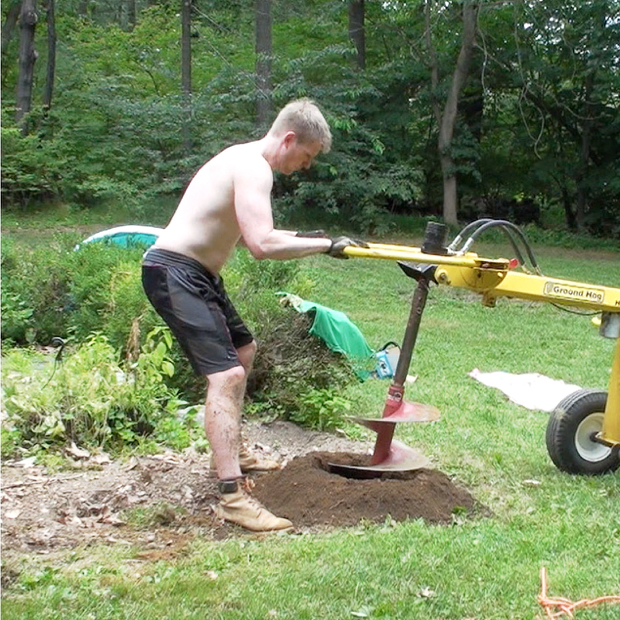Engineered for Success: The Scientific Research Behind Robust and Resistant Deck Footings
Engineered for Success: The Scientific Research Behind Robust and Resistant Deck Footings
Blog Article
Make Certain Stability and Long Life With Effectively Installed Deck Grounds
Deck footings might not be one of the most glamorous element of deck construction, but they play an essential function in guaranteeing stability and longevity. Properly mounted grounds provide a strong foundation for your deck, protecting against usual concerns like sagging, moving, and even collapse. Nonetheless, picking the best type of ground and properly installing it can be a complicated process. In this conversation, we will check out the importance of correct deck footings, elements to consider during installation, various kinds of grounds offered, step-by-step installment overview, and upkeep suggestions for making certain durable footings. So, if you intend to ensure the stability and durability of your deck, keep reading to find the key understandings to attain a resilient and structurally audio exterior area.

Relevance of Correct Deck Footings
Why are properly set up deck grounds important for the stability and longevity of your deck? The answer lies in the essential function that deck footings play in supporting the weight of the whole framework. Deck grounds are the structure on which the deck rests, transferring the lots from the deck to the ground. It can lead to an array of concerns that jeopardize the security and durability of the deck. when grounds are not properly installed.
To start with, effectively set up deck footings distribute the weight of the deck evenly, preventing any irregular settling or sinking. This is specifically essential in locations with unpredictable dirt, as it aids to alleviate the risk of the deck collapsing or shifting. In addition, well-installed grounds make certain that the deck remains degree, stopping any structural damages that can occur when a deck ends up being irregular.
Secondly, correctly set up grounds give a solid support for the deck, avoiding extreme activity and guide. This assists to preserve the architectural integrity of the deck, decreasing the threat of crashes or injuries. It additionally lessens the wear and tear on the deck, enabling it to hold up against the aspects and routine usage for a longer period of time.
Variables to Think About for Deck Ground Setup
When installing deck grounds, there are numerous essential variables to take into consideration for appropriate installment. Different soil types have different load-bearing abilities, so it is important to conduct a soil test to guarantee the footings can support the weight of the deck and its residents. By taking right into account these elements, you can make sure the correct setup of deck grounds and appreciate a durable and steady deck.
Kinds Of Deck Grounds to Pick From
There are a number of various kinds of deck grounds available for you to select from. Each type has its own benefits and negative aspects, so it's vital to consider your specific needs and the problems of your deck prior to deciding.
One common sort of deck footing is the concrete footing. This entails digging holes in the ground and pouring concrete right into them to create a strong structure. Concrete grounds are long lasting and offer outstanding security, making them appropriate for decks in locations with difficult dirt conditions or high wind tons.
One more alternative is the helical pier footing, which includes a steel shaft with helical plates that are screwed into the ground. These grounds fast to set up and can be utilized in different soil kinds, consisting of sandy or clay soils. They are also flexible, permitting simple leveling of the deck.
Sonotube grounds are one more prominent selection. These footings are created by putting a cardboard tube in a hole and loading it with concrete. Sonotube footings are relatively simple to mount and supply sufficient stability for smaller decks or in locations with less requiring soil conditions.
When picking the type of deck ground, it's essential to consider aspects such as soil conditions, deck dimension and weight, regional building ordinance, and individual preferences. By selecting the appropriate footing kind, you can guarantee the security and durability of your deck.
Step-by-Step Overview for Setting Up Deck Footings

Identify the area: Begin by marking the exact setting of each footing using risks and string (Deck Footings). Think about any regional building regulations or laws pertaining to problem ranges
Dig the openings: Utilize a message opening digger or an auger to dig the holes for the grounds. Generally, a depth of at the very least 36 inches is advised for security.
Degree the holes: Ensure that all-time lows of the holes are degree (Deck Footings). This can be accomplished by making use of a degree or a straight board throughout the top of the openings
Add gravel: Location a layer of gravel at the end of each hole to enhance water drainage and stop the ground from penetrating the soil over time.
Put the footing forms: Insert the footing forms into the openings, guaranteeing they are focused and level. Usage stakes to safeguard them in position.
Mix and pour concrete: Comply with the instructions on the concrete mix bag to prepare the concrete. Put the concrete right into the ground kinds, filling them entirely.
Smooth the surface: Use a trowel to smooth the surface of the concrete and get rid of any type of air pockets. Permit the concrete to cure according to the read more supplier's guidelines.
Maintenance Tips for Lasting Deck Grounds
Correct maintenance is essential for making sure the longevity and security of deck footings. By on a regular basis examining and keeping your deck footings, you can prevent damage and possible safety risks. One important facet of maintenance is to his response frequently examine for any type of signs of damage, such as fractures or movement in the footings. It is crucial to resolve them quickly to stay clear of further damage. if you see any issues.
Routine cleansing is likewise crucial for maintaining deck grounds. Debris, plant life, and dirt can gather around the footings, which can cause moisture build-up and decay. Cleansing the grounds routinely, making use of a stress or a brush washing machine, can assist protect against these issues and expand the life expectancy of your deck.
Along with cleansing, it is necessary to maintain the location around the grounds clear of any type of blockages. Prevent stacking products against the footings or enabling plants to grow as well near to them. These obstructions can trap dampness and create the grounds to deteriorate in time.
Lastly, routine resealing of the grounds is recommended to safeguard them from wetness and various other ecological elements. Applying a water-proof sealer can assist protect against water damage and prolong the life expectancy of the footings.
Final Thought
Finally, proper installment of deck footings is essential for making sure stability and longevity of your deck. Elements such as soil kind, load ability, and neighborhood structure codes require to be taken into consideration when picking the ideal type of deck footings. Adhering to a detailed overview for installation and normal upkeep will aid to make certain the footings stay long lasting and lasting.
In this conversation, we will certainly explore the importance of correct deck footings, variables to think about during setup, various types of grounds readily available, step-by-step installation guide, and maintenance ideas for guaranteeing long-lasting grounds. Deck footings are the foundation on which the deck rests, moving the tons from the deck to see here now the ground.One typical type of deck ground is the concrete ground. Insert the footing forms: Put the ground forms into the holes, ensuring they are centered and level.In final thought, correct installation of deck grounds is important for ensuring stability and longevity of your deck.
Report this page